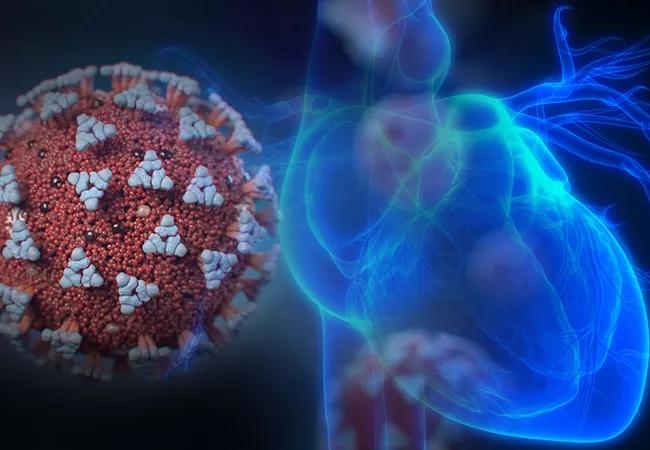Advertisement
Early data point to association between mortality and positive troponin

Tracking a COVID-19 patient’s troponin upon admission and throughout hospitalization may offer prognostic insights, according to recent data. In a Tall Rounds online CME activity from Cleveland Clinic, Venu Menon, MD, presented an overview of recent data from China and New York indicating that patients with COVID-19 and elevated troponin fare markedly worse than those who are troponin negative, even in the presence of existing cardiovascular disease.
Advertisement
Cleveland Clinic is a non-profit academic medical center. Advertising on our site helps support our mission. We do not endorse non-Cleveland Clinic products or services. Policy
“While these are observational data, the trends are strong enough to prompt us to incorporate daily troponin checks into our standard of care for patients with COVID-19,” says Dr. Menon, Section Head of Clinical Cardiology in Cleveland Clinic’s Miller Family Heart, Vascular & Thoracic Institute. “Data are showing that about 20% of patients admitted to the hospital for COVID-19 have myocardial injury and that those patients generally do poorly.”
Initial reports from China showed an association between acute cardiac injury (defined broadly as an elevated high-sensitivity troponin I or troponin T upon admission or during hospitalization) and a sobering mortality rate of over 50% in patients with COVID-19. Scientists suspect that, as was seen with SARS and MERS, unopposed angiotensin II activity may play a role in acute myocardial injury in addition to the acute lung injury that characterizes the illness.
COVID-19 causes a wide spectrum of myocardial injury, from myocardial infarction due to plaque rupture or demand, to direct injury from cytokine storm, to electrical instability from myocarditis, to effects from QT-prolonging medications used to treat the disease. Reports from New York and China show that non-coronary ST elevation appears to be common in patients with COVID-19.
Published data from a hospital in Wuhan, China, show that the association between positive troponin and mortality is strong and increases as the degree of myocardial injury indicated by troponin level increases. Among patients with existing cardiovascular disease, those with elevated troponin had a dramatically higher mortality rate (69.4%) than those with negative troponin (13.3%). Even patients without existing cardiovascular disease had far higher mortality with positive troponin (37.5%) than without (7.6%).
“When you compare patients who recovered with those who succumbed to the disease, you can see the degree to which troponin levels are prognostic,” says Dr. Menon. “Patients who never had elevated troponin did well, whereas those who had serially elevated troponin over their time in the hospital did not.”
Some patients who initially tested negative also developed positive troponin tests during hospitalization, and a spike in troponin level was observed before death. “These could be separate mechanisms, but the data we have clearly indicate that a test that becomes positive or more positive heralds an increasing mortality risk,” says Dr. Menon.
The data suggesting a link between positive troponin and mortality in patients with COVID-19 have prompted changes in how Cleveland Clinic approaches troponin testing in this population.
“Normally, we are a bit unique in that we only use high-sensitivity troponin tests in the emergency department, and we use the fourth-generation test in the rest of the hospital,” says Dr. Menon. “But because of these findings, we now perform high-sensitivity tests in patients with or suspected of having COVID-19, and we do them on a daily basis for at least the first few days of hospitalization.” Clinicians then assess potential causes of troponin elevation, including hyperinflammation, which may respond to immunosuppressive therapy.
Advertisement
This altered approach to testing is in addition to other practice changes in response to COVID-19, including increased awareness in the cardiac catheterization lab and the use of point-of-care ultrasound in patients with ST elevation.
For more information about managing cardiovascular aspects of COVID-19, watch and earn CME credit with Cleveland Clinic’s Tall Rounds on ConsultQD Live.
Advertisement
Advertisement

Patients report improved sense of smell and taste

Clinicians who are accustomed to uncertainty can do well by patients

Unique skin changes can occur after infection or vaccine

Cleveland Clinic analysis suggests that obtaining care for the virus might reveal a previously undiagnosed condition

As the pandemic evolves, rheumatologists must continue to be mindful of most vulnerable patients

Early results suggest positive outcomes from COVID-19 PrEP treatment

Could the virus have caused the condition or triggered previously undiagnosed disease?

Five categories of cutaneous abnormalities are associated with COVID-19